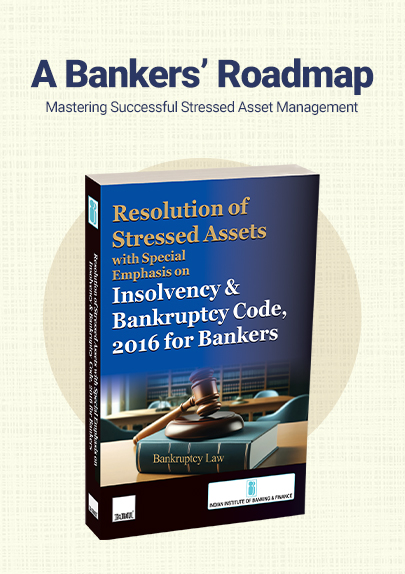Inclusion of Mortgaged Property in Liquidation Estate Was Right As Applicant Didn’t Comply With Reg. 21A Requirements
- Blog|News|Insolvency and Bankruptcy Code|
- 2 Min Read
- By Taxmann
- |
- Last Updated on 6 March, 2024
Case Details: Phoenix ARC Pvt Ltd. v. Kuldeep Verma, Liquidator of K S Oils Ltd. - [2024] 160 taxmann.com 79 (NCLT-Indore)
Judiciary and Counsel Details
-
- Mahendra Khandelwal, Judicial Member & Kaushalendra Kumar Singh, Technical Member
- Amit Singh Chadha & Ms Soumya Dharwa for the Applicant.
- Vivek Sibal & Aditya J. Pandya for the Respondent.
Facts of the Case
In the instant case, the corporate debtor took loans from banks and the said facility granted by banks was secured by a mortgage created on ‘H’ property rights. Meanwhile, banks assigned all their rights, title and interest in non-performing assets/debt of the corporate debtor in favour of the applicant vide the assignment deed.
Later, a liquidation order was passed against the corporate debtor by the NCLT and the respondent was appointed as liquidator. Pursuant to the liquidation order, the liquidator invited a Scheme of compromise/arrangement (scheme) under section 230 of the Companies Act, 2013 for the revival of the corporate debtor and, the applicant filed its claim in Form- D for 12.84 acres of land and buildings and machinery thereon of H property.
Subsequently, the applicant through its e-mail informed the liquidator of its unwillingness to relinquish security interest in respect of H’s property and further requested the liquidator to hand over possession of the said property. However, since nothing was realized from the said property even after so many days, the liquidator vide e-mail informed the applicant that H Property now form part of the liquidation estate and instructed to take back possession of the said property from the applicant.
Thereafter, the applicant filed an instant application against the illegal act of liquidator by interfering in the rights of the applicant being secured creditor with respect to a security interest on H Property.
It was noted that when the applicant proceeded to realize security interest, it was their duty to ask the liquidator for an estimated amount, although there was no document shown to indicate that the applicant asked the same from the liquidator.
NCLT Held
The NCLT observed that regulation 44 of the IBBI (Liquidation Process) Regulations, 2016, provides for a timeline within which the liquidation process has to be completed and if the contention of the applicant was accepted, then the liquidation process could not be completed within the stipulated/ reasonable period.
Further, as per Regulation 21A(1) of Liquidation Process Regulations, 2016, a secured creditor is required to inform the liquidator within 30 days from the liquidation commencement date of its decision to relinquish its security interest to the liquidation estate or realize its security interest, failing which the assets covered under the security interest are presumed to be part of the liquidation estate.
The NCLT held that since the applicant failed to comply with the requirements of Regulation 21A of the IBBI (Liquidation Process) Regulations, the decision of the liquidator that the entire property forms part of the liquidation estate would not be contrary to the law.
Disclaimer: The content/information published on the website is only for general information of the user and shall not be construed as legal advice. While the Taxmann has exercised reasonable efforts to ensure the veracity of information/content published, Taxmann shall be under no liability in any manner whatsoever for incorrect information, if any.

Taxmann Publications has a dedicated in-house Research & Editorial Team. This team consists of a team of Chartered Accountants, Company Secretaries, and Lawyers. This team works under the guidance and supervision of editor-in-chief Mr Rakesh Bhargava.
The Research and Editorial Team is responsible for developing reliable and accurate content for the readers. The team follows the six-sigma approach to achieve the benchmark of zero error in its publications and research platforms. The team ensures that the following publication guidelines are thoroughly followed while developing the content:
- The statutory material is obtained only from the authorized and reliable sources
- All the latest developments in the judicial and legislative fields are covered
- Prepare the analytical write-ups on current, controversial, and important issues to help the readers to understand the concept and its implications
- Every content published by Taxmann is complete, accurate and lucid
- All evidence-based statements are supported with proper reference to Section, Circular No., Notification No. or citations
- The golden rules of grammar, style and consistency are thoroughly followed
- Font and size that’s easy to read and remain consistent across all imprint and digital publications are applied





 CA | CS | CMA
CA | CS | CMA


